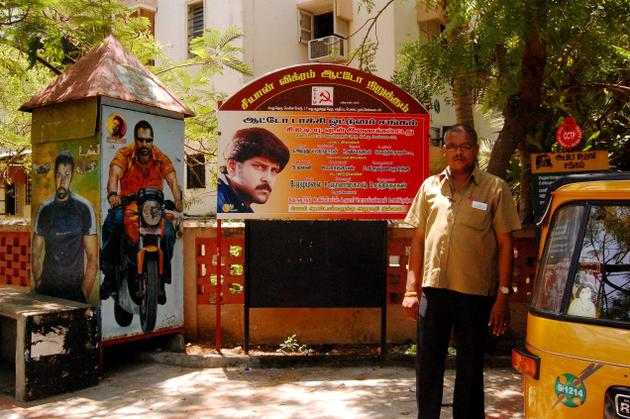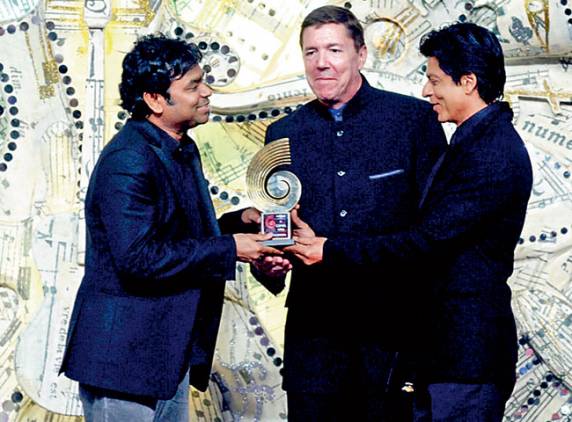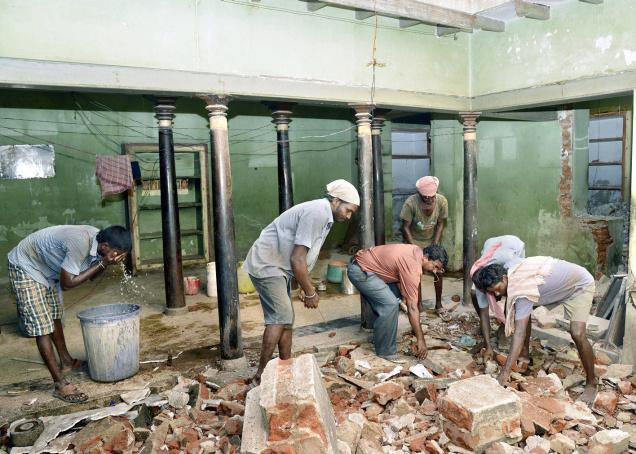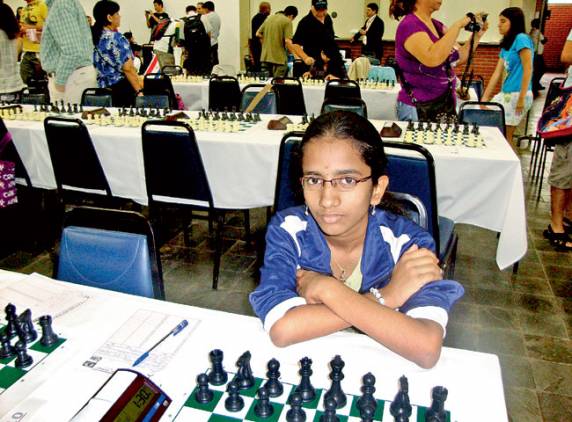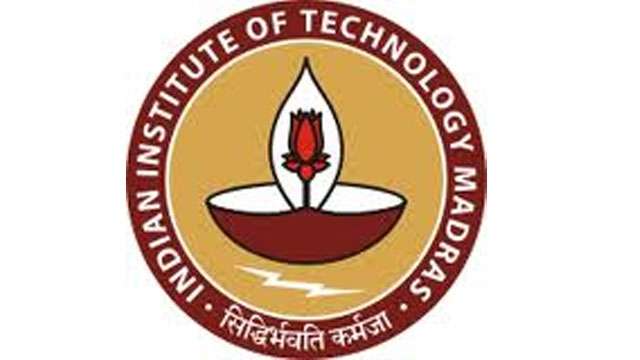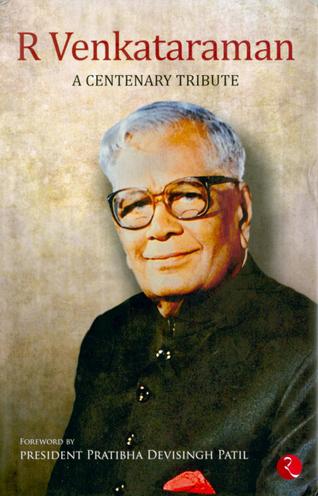Auto attraction: Stand for Vikram
Chennai’s star auto stands — where hero worship meets social service, writes Aparna Karthikeyan
“This is Chennai’s first auto stand dedicated to actor Suriya,” Murthy tells me enthusiastically. “Annan (as they endearingly refer to him) lives nearby. When he goes past, he can see the cut-out we’ve kept for him.” I’m standing across Arcot Street, in T. Nagar, next to Ettam Vallal Suriya Auto Nirutham. The afternoon sun is fierce, but it hardly dampens spirits at the city’s only Suriya auto stand. “We opened the stand just six months ago. On his birthday — July 23 — we put up a big banner here,” Murthy points over my head, “and we distributed food to 150 people, as well as notebooks and geometry boxes to 50 school children.”
“Sixteen of us went to the General Hospital on July 23,” continues P. Thangaraj. “We’re 11 members in this stand. Along with our friends, we donated blood. That pot over there,” he shows me a mud pot with a glass on top of it. “We drink water from it daily, by the roadside. It’s mineral water, madam; we all take turns to fill the pot. But someone stole our stainless steel tumbler,” he laughs. I ask if their families too are Suriya fans. Murthy looks shocked that I could imagine otherwise. “Of course, they’re Annan’s fans,” he says. “We all have photographs taken with him; we met him on his birthday. The photo is at home; you came here suddenly, otherwise, we would’ve shown it to you,” Thangaraj tells me.
Celebration through service
I go with an appointment to Ilayathalapathi Vijay Auto Stand in Kasturba Nagar, Adyar. Sitting in Kesavan’s auto, I listen to him and Thiruvanmiyur K.V. Dhamu tell me about being Vijay fans. “Vijay used to live nearby, now he’s moved to Neelangarai, but this stand has been around for 15 years,” Dhamu tells me. As ardent Vijay fans, they celebrate his birthday with fanfare. “This year, we distributed gold finger rings to 22 children in the Government Hospital, Adyar. See for yourself,” he says, showing me an album full of pictures. “This one is when we conducted a blood donation camp,” he points out a picture. “Around 107 people gave blood. The camp was organised by the Rasigar Mandrams of Velachery and the surrounding areas. Look at this picture — we cut a cake in a school, distributed notebooks and gave biriyani to the children. We’re very fond of Vijay sir, and pray for him on June 22, his birthday.” A Vijay movie release is also a big occasion, marked by cut-outs and banners, and the members also go to the cinema together for the first day, first show.
When I ask what motivates them to take up social service, they say they draw inspiration from the star himself. “He does a lot of service, but he advises us to look after ourselves and our families first. We do this in our spare time only,” Dhamu explains.
First day, first show
At the Chiyaan Vikram Auto Stand in 17th Cross Street, Besant Nagar, I find three autos, but no drivers. I wait by the beautifully painted stand — there’s Vikram on a bike, Vikram looking cool, Vikram looking smart, and Vikram looking innocent (Deiva Thirumagal). I spot D. Sathyanathan walking towards an auto, and ask if he’s from the stand. “Yes, for the last ten years, this has been ‘Vikram sir’ stand,” he says. “We’re ten members, all his ardent fans. Actor Vikram used to live nearby; he’s even driven my auto back then,” he says with a shy smile. On the star’s birthday, they meet him with shawls and garlands; there’s usually a big event at a kalyanamandapam when tailoring machines, iron-boxes and tricycles (for people with disabilities) are distributed. “We all participate and help in the function. When a new movie is released, we pool our finances to meet the cost of banners and cut-outs, and, of course, catch the first day, first show.” Sathyanathan tells me that his daughter is also very fond of Vikram. “You know, he attended my wedding,” he adds with quiet pride. Among Vikram’s movies, Sathyanathan loves Sethu and Pithamagan, besides Anniyanand Saami. “We’ve already watched Thaandavam, and plan to take our families later.” At the Suriya stand, expectations run similarly high for the release ofMaattran. “Nobody has done that kind of double role; the movie is going to do very well,” Murthy assures me. The entire team don’t just watch the first day, first show; they go back to the cinemas several times (“only Sathyam/ Sangam theatres, madam”) to watch their idol on screen. “We want him to visit our stand during Ayudha Pooja; we’re going to invite him,” Murthy and Thangaraj tell me. After all, it’s thanks to Suriya that the stand is so popular, and many auto drivers now want to join them. “We have a policy of never demanding unfair rates from our customers. We work well as a team and split the cost of putting up banners. We do it because we like it; and because we’re huge fans of Suriya,” says Thangaraj. Dhamu echoes his sentiments.
source: http://www.TheHindu.com / Home> Life & Style> Society / by Aparna Karthikeyan / Chennai, October 03rd, 2012
